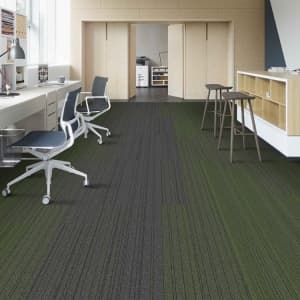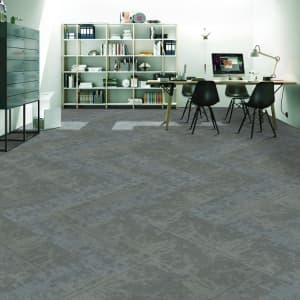How to Install Artificial Grass on Dirt/Soil Surfaces: Pre-Process Steps
 Sep 03,2020
Sep 03,2020

 Diamond Carpet
Diamond Carpet
STEP ONE: Pre-installation
1. CHECK FOR UNDERGROUND HAZARDS
Water pipes and electric lines may be found under the surface of your desired installation area. Cover sprinklers at the pipe level or remove them if you don’t need them anymore. Add required drainage pipes for easy water clear out. Mark the location of unused sprinklers to avoid uneven surfaces.
Protect your electric wires by moving them away from the perimeter by six to eight inches. Keep them out of the way so they won’t be damaged when you secure the turf’ edges. Lay them on the top of the subgrade (crushed rock) surface with u-nails later on.
STEP TWO: Prepare the Area
Ground preparation before installing the base material for artificial turf for soil/dirt surfaces
1. GET RID OF WEEDS
The first thing you do before installing your grass is killing grassroots and weeds.
Spray the area with a non-toxic weed killer you trust. Do this at least two weeks before your desired installation date. Weed killers need ample time to work. Thoroughly fill your place with weed killers to make sure there’ll be no sign of life on your lawn.
2. REMOVE THE TOP LAYER OF YOUR SOIL
To make room for your new base, dig the top by three to four inches. Then walk over the area or use a hand tamp to apply pressure to loose soil.
3. PLAN YOUR DRAINAGE
If you’re installing artificial grass atop well-draining soil, you’ll have little to no problems. This is because synthetic grass drains great. If on top of poorly draining soil, install an efficient drainage system. If your location experiences very light rain, drainage gaps every six inches around the perimeter should be enough.
4. INSTALL A BENDER BOARD
Map out the perimeter so you have a clean line to separate your turf area from the other components in your lawn. Fence it as a guide so your turf won’t crawl out its designated space.
5. OPTIONAL: INSTALL A GOPHER WIRE
Roll your gopher wire out on the installation area little by little. Secure the laid parts by putting u-shaped staples on every few feet so it doesn’t move over time. After fully unrolling, use a wire cutter to trim it down to size.
6. OPTIONAL: INSTALL A WEED BARRIER
Layout a geotextile layer at the bottom of the dug-up area. Before the artificial grass base material.
STEP THREE: Lay your base
1. PUT IN YOUR SUB-BASE MATERIAL
Using a wheelbarrow or shovel, scatter your base material. Generally, in places with a mild climate, you can use type 1 stone, gravel, crushed rock, decomposed granite, or any stones or rocks smaller than 3/8 inches as a base. Around 3-4 inches of the base material is needed to improve drainage and avoid slumping. The best sub-base for artificial grass is one that can absorb surface water fast.
2. ADD SHARP SAND
Use a shovel or sand spreader to lay sharp sand 10-15mm thick on the top of your sub-base for it to be firm.
3. WATER THE WHOLE AREA
Use your hose and sprinkle your space with water. Be sure not to overwater your sub-base because your base can get washed away.
4. COMPACT YOUR STONES
Use a plate compactor or plate tamper to compact the surface with. For areas with obstructions like trees, use a hand tamper. Or you can lay down a 2x4 plank of wood on the stones and hammer down.
Ideally, the base should be reduced to around 90% of its original depth, it should feel like concrete but retain its ability to drain. Pass back and forth with the compactor or tamper in overlapping directions for best compaction results.
If you have the budget, you can rent or buy a vibratory plate compactor—the most effective and time-saving option. A hand tamps can also be used at an affordable price.
5. LEVEL THE ENTIRE PLACE
Double check your area for high and low spots, fill or flatten if uneven. Add additional base if needed. Take down high areas with the rake, add base material for low spots.
STEP FOUR: Attach your Artificial Grass
1. PLAN THE PLACING
Note the measurements of your area and compare it to your grass. Make it so that all the blades are facing the same direction so they will look more natural. Mark your spaces for easy reference. Use spray paint or chalk and write on the surface so you don’t forget that it’s the space for a certain cut.
PRO TIP: Draw lines for borders on your surface. This will serve as a guide for laying your seam fabric later on.
2. ROLL YOUR TURF OUTSIDE
On an even surface (preferably not the one you will install it, so you won’t step on it) check your notes and your grass. When you roll your grass out to the desired measurement, mark it by cutting four (4) inches from the edge towards the center.
PRO TIP: Leave at least 1” allowance to be safe against miscalculations.
3. ROLL YOUR TURF BACK IN
Roll your turf back and stop when your marked cuts are at the top of the roll. Cut along your marks to get your custom slice. Take the cut portion to your installation place.
PRO TIP: Use a chalk line (rope grazed with chalk) to mark your roll from end to end for a more even cut.
4. ROLL TURF OUT ON INSTALLATION SURFACE
Roll out your synthetic grass over the installation area. Hold the edges and shake lightly so air can get under it, over the compacted stones. Don’t drag the grass over the base or you might ruin the smooth surface.
5. OPTIONAL: USE A CARPET STRETCHER OR A CARPET KICKER
A carpet stretcher can stretch the strips of turf shortly before you fasten or seam them. Stretching the turf using this tool eliminates wrinkles, reduces expansion brought about by heat, and helps secure the surface tighter to the ground.
6. SEAM YOUR TURF PIECES TOGETHER
Set your second mat as close as you can to the one already laid. With small sections at a time, but their sides together like seaming two pieces of fabric. It should look like a tent that meets in the middle. Gaps should be kept within 1/8 of an inch to be unnoticeable. Cut off excess from the newly laid side if it overlaps with the one already fixed.
7. LAY YOUR SEAM TAPE OUT
Ask for from two people when seaming patches of turf. Cut seam tape as long as your turf’s edges. Place it underneath the part where the sides meet. Keep them in place with 6-inch nails. One for each corner. Lift up the sides of your turf and ask your assistants to hold them. Pour in some glue and spread evenly through the entire tape.
8. STITCH
Starting from the farther end, butt seams together little by little, with your assistants only releasing portions you need. Make sure that the turf doesn’t meet ahead of you laying it down and that their fibers are away from the glue up until the end.
9. APPLY PRESSURE
A step above the sides of your newly seamed areas to make sure it sticks to the seam tape. You can also throw in some heavy objects over the seam.
10. SPIKE TO KEEP THE TURF IN PLACE
Hammer nails into the ground every few inches. Remember not to trap any grass fibers underneath the nail’s head. Secure the turf perimeter. Use landscaping anchor pins or 4 – 6 inches galvanized stakes to fasten the turf in place. Place them just around the perimeter at around 6 – 8-inch intervals. And also along the seam. Although you need to hammer them flat, you should be extra careful and avoid excessive hammering because it can cause dips in your lawn.
For next article, we will update the post-process steps of the grass installation.
------------------------------------------------------------------------------------------------------------------------------------This article is written by Wuxi Diamond Carpet Manufacturing Co., Ltd. Copyright Reserved. It is not allowed to be copied without permission. For reprinting, please declare the oringinal link. http://www.diamondcarpet.cn/
Contact Us
Wuxi Diamond Carpet Manufacturing Co.,Ltd.
E-mail: wxdiamondcarpet@126.com
Tel : 0086-510-82890779
Add:Room 803, Jinxing Business Center, No.258 West Tiahu Avenue, Liangxi District, Wuxi, Jiangsu, China





 Home
Home Red Carpet Tiles For Snooker Halls And Amusement Arcade Flooring
Red Carpet Tiles For Snooker Halls And Amusement Arcade Flooring  You May Also Like
You May Also Like










 Tel
Tel
 Email
Email
 Address
Address






